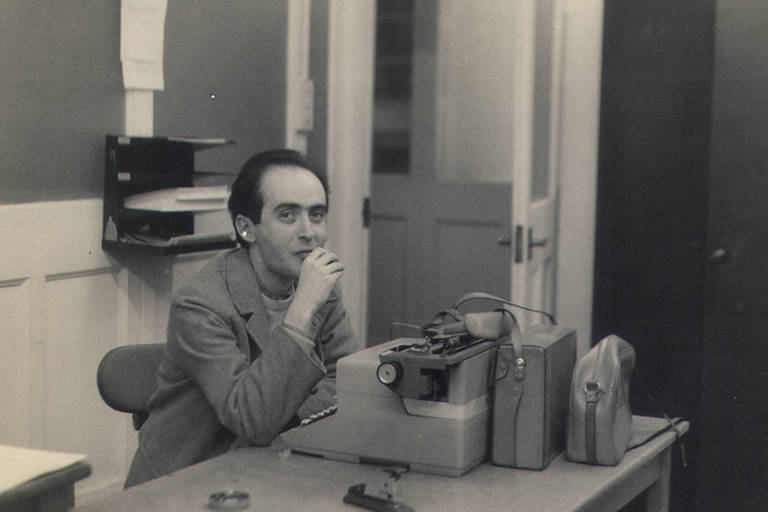Search for Vladimir Herzog on Google. The first image that appears is that of a man hanging by a strip of cloth tied to the bars of a window.
The journalist had just taken over as director of TV Cultura when he was summoned to testify at DOI-Codi in Sao Paulo, accused of maintaining ties with the communists. He was tortured and killed during the interrogation.
Military officers forged the photograph depicting an alleged suicide. It subsequently became a symbol of the fight against the military regime and in favor of human rights.
But it does not appear in an exhibition about the journalist at Itaú Cultural in São Paulo. The exhibition prefers to highlight his life as a devoted father and husband and official family photographer. He was the obsessive editor of Visão magazine, and always concerned about access to culture in the country. But Herzog never became a filmmaker like he wanted since he murdered at the age of 38.
The exhibition takes place at a time in which the military dictatorship is the target of historiographic disputes between left and right.
Those on the right— President Jair Bolsonaro among them — are divided between those who defend the regime as inevitable against a red threat and those who doubt its existence.
This is an attempt to rewrite the history that has caused museums and cultural institutions, especially those that rely on tax incentive laws, to redouble their attention by mounting exhibitions about the regime.
In the case of the exhibition about Herzog Paulista Avenue cultural center of, the exclusion of controversial photography came from a request from the journalist's family. Ivo Herzog, who was nine years old when his father was murdered, says he would not visit the exhibition if the photo were present.
"The suicide picture is a scam, and it could give the wrong idea that he committed suicide," said Luis Ludmer, one of the exhibition's organizers and an adviser to the Vladimir Herzog Institute.
Another exhibition, "Meta-Archive 1984-1985", scheduled to open at the end of the month at the Sesc Belenzinho, in the eastern part of São Paulo, exposes the guts of the military regime more forcefully.
The theme, delicate given the current context, meant that texts and images promote the show had to be approved by the highest levels of Sesc.
"All material dealing with the dictatorship has to be careful that it does not cause problems," explains the director of the institution in São Paulo, Danilo Santos de Miranda.
He stresses that the show is not intended to promote militancy or "cause embarrassment" to anyone. "The idea is to put the facts, the documents on the table, which can be shown and discussed."
The documents are the Resistance Memorial of São Paulo archives, which occupies the old building of Deops, São Paulo State Department of Political and Social Order, in Luz.
Paulo Miyada, curator of the Tomie Ohtake Institute who led a show on the Institutional Act Number Five 50th anniversary - the decree that intensified military repression starting in 1968 - said last year he opted for an online crowdfunding to host the event when he was faced with the difficulty of obtaining sponsorship through the traditional ways. The show's catalog will be launched at the cultural center in late August.
"The process of maturation and discussion about the Brazilian dictatorship was never complete", he comments. "And if there are new narrative disputes today, that's another sign of that."
Translated by Kiratiana Freelon
